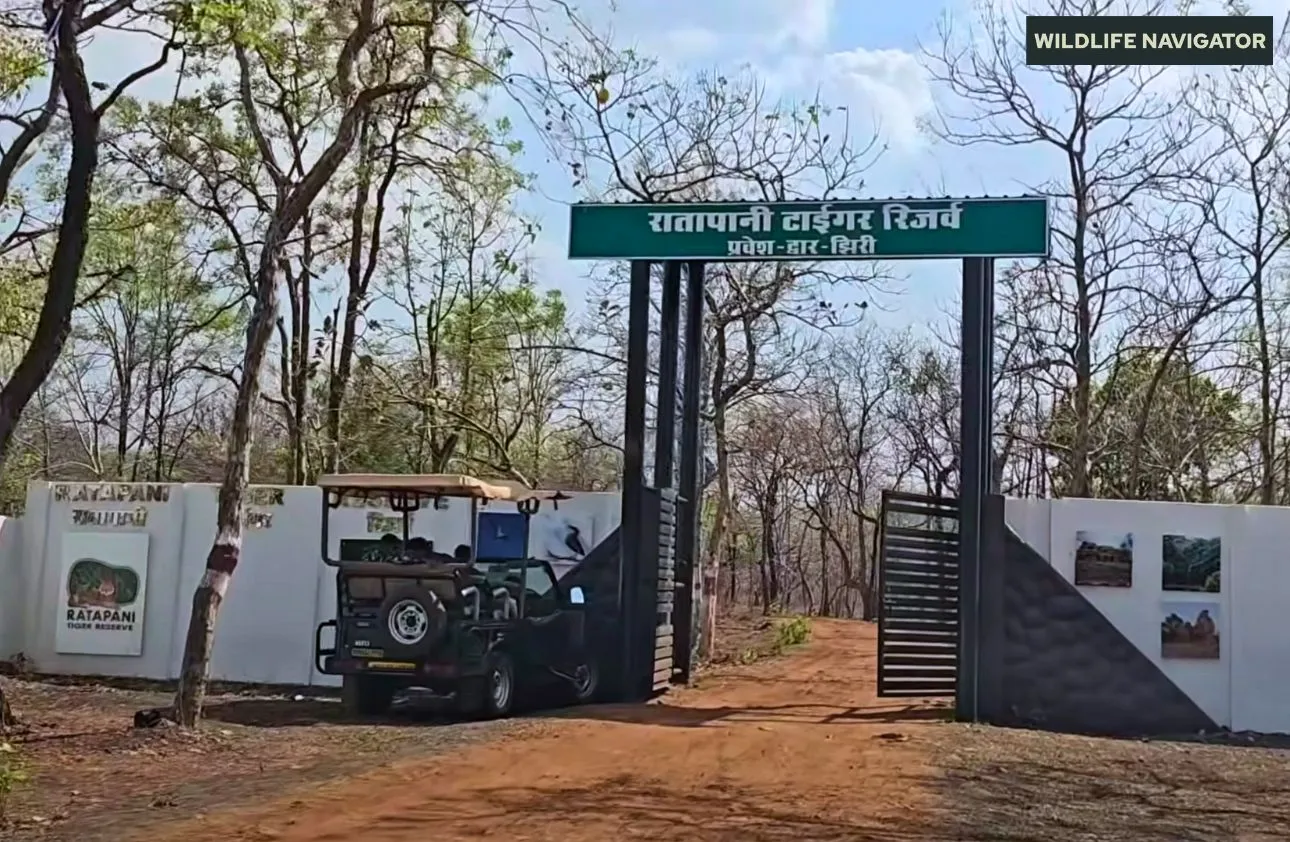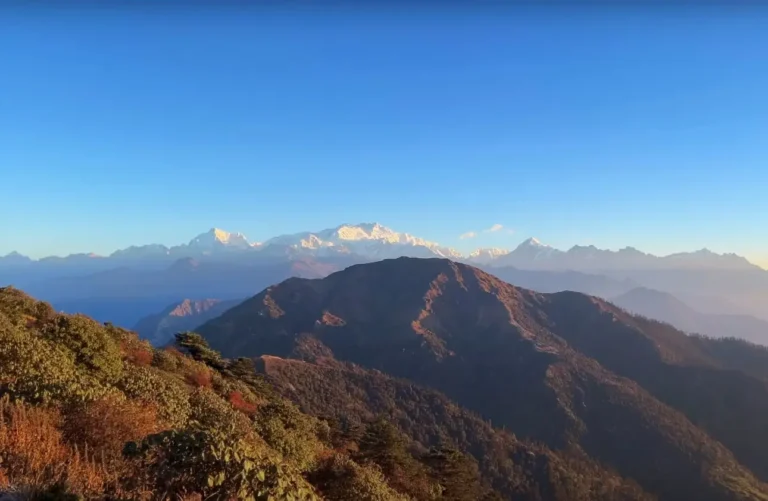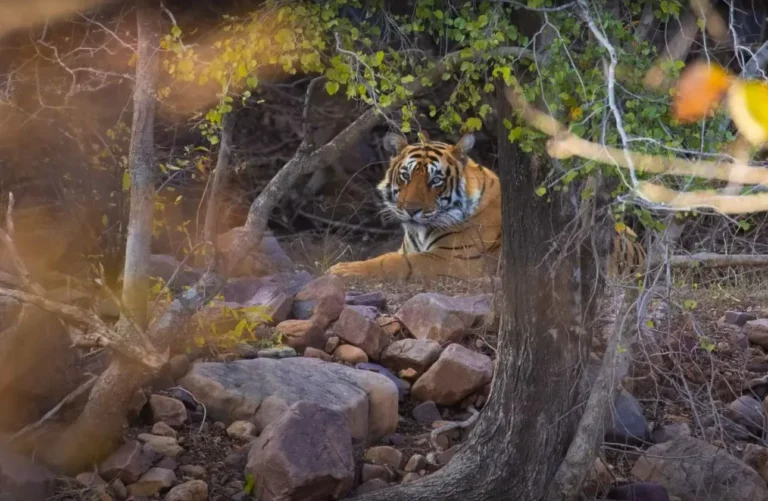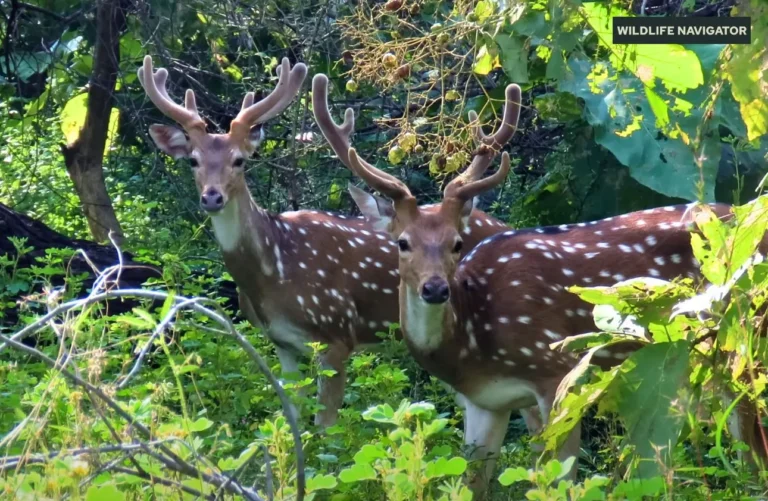Ratapani Tiger Reserve: Hidden Wilderness and Tiger Conservation in Madhya Pradesh

Ratapani Tiger Reserve is one of India’s most promising yet lesser-known wildlife destinations, nestled in the heart of Madhya Pradesh. Spread across the districts of Raisen and Sehore, the reserve is a vital green corridor connecting several major forest landscapes, including Satpura, Panna, and Nauradehi Tiger Reserves. Known for its scenic beauty and thriving biodiversity, Ratapani forms a crucial habitat for the royal Bengal tiger, making it a strong contender for official recognition under the National Tiger Conservation Authority (NTCA).
The reserve boasts a mosaic of dense teak forests, rocky hills, and shimmering reservoirs like Barna and Ratapani, offering both natural charm and ecological balance. Among the tiger reserves in India, Ratapani is emerging as an important site for tiger conservation, bridging key forest corridors and supporting a growing big cat population. Beyond its wildlife, the area also shelters ancient human history through the famous Bhimbetka Rock Shelters, a UNESCO World Heritage Site located within its vicinity.
With its mix of wilderness, culture, and potential for sustainable tourism, Ratapani Tiger Reserve stands as a hidden gem in India’s central highlands—an emerging paradise for nature lovers, wildlife photographers, and conservationists alike.
1. History, Geography & Landscape
1.1 Historical Background
The history of Ratapani Tiger Reserve traces back to its recognition as a Wildlife Sanctuary in 1976 under the Wildlife Protection Act, 1972. Owing to its rich biodiversity and growing tiger population, the National Tiger Conservation Authority (NTCA) proposed Ratapani’s upgradation to a full-fledged Tiger Reserve. The proposal, supported by the Madhya Pradesh Forest Department, highlights Ratapani’s vital role in maintaining the central Indian tiger corridor connecting Satpura, Veerangana Durgavati Tiger Reserve, and Panna reserves. The area’s ancient heritage is equally notable—Bhimbetka Rock Shelters, located within its boundaries, showcase Stone Age cave paintings that are thousands of years old.
1.2 Geographical Location
Ratapani Tiger Reserve lies in the Raisen and Sehore districts of Madhya Pradesh, spread over approximately 824 square kilometres. The reserve is strategically positioned near Bhopal, the state capital, making it easily accessible to tourists. It forms part of the Vindhya hill ranges, characterised by rugged terrain, rocky plateaus, and serene valleys nourished by several seasonal streams.
1.3 Landscape & Natural Features
The reserve’s landscape is dominated by dry deciduous forests, hilly tracts, and two major reservoirs—Barna and Ratapani, which are lifelines for its wildlife. Numerous small rivers like the Barna and Kaliyasot traverse through the forest, providing freshwater habitats for a range of species. The varying elevation and forest density create a mosaic of microhabitats that support tigers, leopards, and countless bird species. The region experiences a tropical climate, with hot summers, refreshing monsoons, and pleasant winters—ideal for wildlife safaris and exploration.
2. Flora of Ratapani Tiger Reserve
2.1 Diverse Forest Ecosystem
The forests of Ratapani Tiger Reserve are a vibrant blend of tropical dry deciduous and mixed forests, typical of the central Indian highlands. These forests are part of the Vindhyan forest system, which supports an incredible range of plant species adapted to the hilly and semi-arid terrain. The greenery remains lush and dense during the monsoon months, transforming Ratapani into a green paradise, while the dry season reveals its rugged, teak-dominated charm.
2.2 Dominant Tree Species
Ratapani’s vegetation is primarily dominated by teak (Tectona grandis), which forms the backbone of the forest canopy. Alongside teak, several other tree species contribute to the biodiversity and ecological health of the area.
Some of the most common trees include:
- Salai (Boswellia serrata)
- Tendu (Diospyros melanoxylon)
- Mahua (Madhuca longifolia)
- Bija (Pterocarpus marsupium)
- Palash (Butea monosperma)
- Saja (Terminalia tomentosa)
- Aonla (Emblica officinalis)
These trees provide essential resources like fruits, leaves, and flowers that sustain a variety of herbivores, birds, and insects.
2.3 Understory & Ground Flora
Beneath the tall trees lies a thriving understory composed of shrubs, climbers, and grasses that add complexity to the ecosystem. Species like bamboo, lantana, and karonda grow abundantly in certain regions. The forest floor, rich in organic matter, nurtures a host of medicinal and aromatic plants—some of which are traditionally used by local communities for healing.
2.4 Ecological Significance
This diverse vegetation not only provides shelter and food for wildlife but also plays a crucial role in soil conservation, water retention, and carbon storage. The floral diversity of Ratapani acts as the foundation of its ecological web, supporting the thriving populations of herbivores and predators alike.
3. Fauna of Ratapani Tiger Reserve
3.1 Rich Wildlife Diversity
Ratapani Tiger Reserve is a haven for wildlife enthusiasts, showcasing a rich diversity of mammals, birds, reptiles, and insects. Its mosaic of teak forests, rocky cliffs, and water bodies provides ideal habitats for both predators and prey. The forest’s healthy ecosystem reflects years of natural balance and minimal human disturbance, making it one of the most promising wildlife landscapes in Central India.
3.2 Major Predators
The apex predator here is, of course, the Royal Bengal Tiger (Panthera tigris tigris). Ratapani’s increasing tiger population is one of the key reasons it was proposed as a full-fledged tiger reserve by the National Tiger Conservation Authority (NTCA). Alongside tigers, the reserve shelters several other carnivores such as:
- Leopard (Panthera pardus)
- Sloth Bear (Melursus ursinus)
- Indian Wild Dog (Dhole)
- Indian Wolf (Canis lupus pallipes)
- Striped Hyena (Hyaena hyaena)
These predators play an essential role in maintaining the ecological balance by regulating herbivore populations.
3.3 Common Herbivores
Ratapani’s prey base is strong, supporting a variety of ungulates and herbivores that ensure a stable food chain. Common species include:
- Sambar Deer (Rusa unicolour)
- Chital or Spotted Deer (Axis axis)
- Nilgai (Boselaphus tragocamelus)
- Chousingha or Four-horned Antelope (Tetracerus quadricornis)
- Wild Boar (Sus scrofa)
These animals can often be spotted grazing in forest clearings or near water sources, especially during early morning and late evening safaris.
3.4 Avian Fauna
Ratapani is also a paradise for birdwatchers. Over 150 species of birds have been recorded, including both resident and migratory ones. Some notable sightings include:
- Indian Pitta
- Crested Serpent Eagle
- Malabar Pied Hornbill
- Peafowl
- Kingfishers, Bee-eaters, and Drongos
The wetlands near Barna Reservoir attract numerous migratory waterfowl during winter, making it a birdwatching hotspot.
3.5 Reptiles and Other Fauna
The forest also supports a range of reptiles such as Indian Cobra, Monitor Lizard, Python, and various skinks and geckos. Amphibians and countless insect species further enrich the biodiversity of this region, highlighting Ratapani’s role as a true biodiversity treasure of Madhya Pradesh.
4. Tiger Conservation Status
Ratapani Tiger Reserve holds immense importance in India’s central tiger landscape. Though currently a Wildlife Sanctuary, it has been proposed by the NTCA (National Tiger Conservation Authority) to be upgraded into a Tiger Reserve, owing to its healthy tiger population and ecological significance.
Recent monitoring by the Madhya Pradesh Forest Department and Wildlife Institute of India (WII) has confirmed the presence of 25–30 tigers within Ratapani and surrounding corridors. The reserve serves as a crucial wildlife corridor linking Satpura, Nauradehi, and Panna Tiger Reserves, allowing safe tiger movement across Central India.
Continuous conservation efforts, anti-poaching patrols, and habitat restoration projects are ensuring that Ratapani remains a thriving refuge for big cats in the years ahead.
5. Attractions & Tourist Experience
5.1 Wilderness and Scenic Beauty
Ratapani Tiger Reserve offers a captivating mix of rugged hills, dense teak forests, and tranquil lakes. The landscape, dotted with natural rock formations and water bodies, creates a perfect backdrop for wildlife photography and nature trails. Visitors can often spot herds of deer, langurs, and peafowl along forest tracks, while the call of the sloth bear echoes through the valley at dusk.
5.2 Bhimbetka Rock Shelters
One of the most iconic attractions near Ratapani is the Bhimbetka Rock Shelters, a UNESCO World Heritage Site. These ancient caves display prehistoric paintings that date back over 30,000 years, depicting scenes of hunting, dancing, and daily tribal life. The site lies on the southern edge of the reserve and provides a fascinating blend of culture and wilderness.
5.3 Best Time to Visit
The ideal time to explore Ratapani is between October and March, when the weather is pleasant and wildlife sightings are frequent around the reservoirs. During the monsoon (July–September), the forest transforms into a lush green haven, though safaris are usually limited.
Whether you’re a wildlife photographer, history lover, or nature enthusiast, Ratapani Tiger Reserve promises an authentic and serene wilderness experience—far from the crowds yet rich in natural and cultural treasures.
6. Safari Zones, Entry Fee & Charges
6.1 Safari Zones in Ratapani
Ratapani Tiger Reserve is divided into several tourism ranges and forest zones that offer unique wildlife experiences. The main safari zones include:
- Delawadi Range – Known for dense teak forests and frequent deer and leopard sightings.
- Bari Range – Popular for birdwatching and serene forest drives.
- Ratapani Range – Offers access to core forest areas with tiger and sloth bear movements.
- Bhimbetka Range – Ideal for combining wildlife exploration with prehistoric rock art visits.
Each zone showcases distinct landscapes, ensuring diverse sightings across every route.
6.2 Safari Types & Timings
Tourists can explore Ratapani through Jeep Safaris, Nature Trails, and Guided Walks (in designated eco-tourism areas).
- Morning Safari: 6:00 AM – 10:00 AM
- Evening Safari: 3:00 PM – 6:00 PM
All safaris are accompanied by trained forest guides provided by the Forest Department.
6.3 Entry Fee & Charges
While charges may vary slightly by season and gate, the approximate rates are:
- Jeep Safari (Indian visitors): ₹2500–₹3500 per vehicle (max 6 people)
- Jeep Safari (Foreign visitors): ₹4000–₹5000 per vehicle
- Entry Fee: ₹250 per person (Indians), ₹500 per person (Foreigners)
- Guide Fee: ₹300–₹500 per safari
Bookings can be made through the Madhya Pradesh Forest Department’s online portal or at local forest offices near Delawadi or Bhopal.
7. Accommodation & Travel Information
7.1 Nearest Towns & Access
Ratapani Tiger Reserve is conveniently located near Bhopal, the capital of Madhya Pradesh, making it easily accessible by road, rail, and air. The reserve is approximately 40 km from Bhopal, 35 km from Raisen, and 70 km from Hoshangabad. Visitors can hire taxis or take buses from these cities to reach the main forest entry points at Delawadi or Bari. The nearest railway station is Bhopal Junction, and the closest airport is Raja Bhoj International Airport (Bhopal), connecting major Indian cities.
7.2 Accommodation Options
While Ratapani itself has limited forest lodging, several eco-friendly resorts, heritage stays, and forest guest houses are available nearby:
- Forest Rest Houses – Operated by the Madhya Pradesh Forest Department; basic but convenient and close to safari zones.
- Eco-Lodges & Resorts – Located near Bhopal or Raisen, offering comfortable stays with natural surroundings.
- Heritage Hotels – For travellers seeking luxury near the reserve while staying connected to city amenities.
7.3 Travel Tips
- Book accommodations and safaris in advance during peak season (October–March).
- Carry comfortable clothing, binoculars, and a camera for wildlife spotting.
- Respect forest rules and avoid plastic or loud noises inside the reserve.
With its strategic location and a mix of budget and premium stays, Ratapani Tiger Reserve is well-equipped for both nature enthusiasts and casual tourists seeking a wildlife getaway.
8. Eco-Tourism & Community Involvement
- Local communities actively participate in sustainable tourism initiatives, guiding safaris and managing eco-lodges.
- Awareness programs educate villagers and visitors about wildlife conservation.
- Eco-tourism promotes alternative livelihoods, reducing dependency on forest resources.
- Community-led initiatives help protect tiger corridors and prevent poaching.
- Visitors are encouraged to follow responsible tourism practices: avoid littering, maintain silence, and respect wildlife habitats.
This approach ensures that Ratapani Tiger Reserve benefits both wildlife conservation and local communities while offering an authentic nature experience.
9. Challenges & Future Prospects
9.1 Challenges
- Habitat Fragmentation: Expanding human settlements and agriculture threaten forest continuity.
- Poaching Risks: Tigers, leopards, and other wildlife face occasional poaching pressures.
- Water Scarcity: Seasonal streams and reservoirs dry up in summer, affecting wildlife.
- Invasive Species: Plants like lantana disrupt natural vegetation.
9.2 Future Prospects
- Proposed upgrade to full-fledged Tiger Reserve under NTCA.
- Habitat restoration and anti-poaching measures are strengthening wildlife safety.
- Connectivity with Satpura, Nauradehi, and Panna corridors ensures tiger movement and genetic diversity.
- Eco-tourism development will provide local employment while promoting conservation awareness.
With ongoing efforts, Ratapani Tiger Reserve is poised to become a critical stronghold for tigers and biodiversity in central India.
10. Conclusion
Ratapani Tiger Reserve stands as a hidden gem of central India, offering a unique blend of rich biodiversity, scenic landscapes, and ancient heritage. Its growing tiger population and diverse wildlife make it a vital part of the Madhya Pradesh tiger corridor network. With responsible eco-tourism, community participation, and strengthened conservation efforts, Ratapani has the potential to emerge as a premier wildlife destination. Protecting this forest ensures the survival of tigers, preserves delicate ecosystems, and allows future generations to experience the untouched wilderness of central India.
(FAQ) – Ratapani Tiger Reserve
1. Which is the 57th tiger reserve of India?
Ratapani Tiger Reserve is the 57th tiger reserve in India proposed under the National Tiger Conservation Authority (NTCA). It was previously a wildlife sanctuary and is gaining recognition for its tiger population and biodiversity.
2. In which district is Ratapani Tiger Reserve located?
Ratapani spans the Raisen and Sehore districts of Madhya Pradesh, with easy access from Bhopal, the state capital.
3. What is Ratapani Tiger Reserve famous for?
Ratapani is famous for its Royal Bengal Tigers, rich biodiversity, dense teak forests, scenic reservoirs like Barna and Ratapani, and the Bhimbetka Rock Shelters, a UNESCO World Heritage Site.
4. Who declared Ratapani Tiger Reserve?
The National Tiger Conservation Authority (NTCA), along with the Madhya Pradesh Forest Department, proposed Ratapani for tiger reserve status due to its ecological importance and tiger habitats.
5. How can I book a safari at Ratapani Tiger Reserve?
Safari bookings can be made through the Madhya Pradesh Forest Department’s official online portal or at local forest offices near Delawadi or Bari ranges.
6. What is the Ratapani Tiger Reserve safari booking price?
Approximate jeep safari charges are:
- Indians: ₹2500–₹3500 per vehicle
- Foreign visitors: ₹4000–₹5000 per vehicle
Entry fees: ₹250 (Indians), ₹500 (Foreigners)
Guide fees: ₹300–₹500 per safari
7. What is the entry ticket price for Ratapani Tiger Reserve?
- Indian visitors: ₹250 per person
- Foreign visitors: ₹500 per person
Additional charges apply for vehicle and guide services during safaris.




